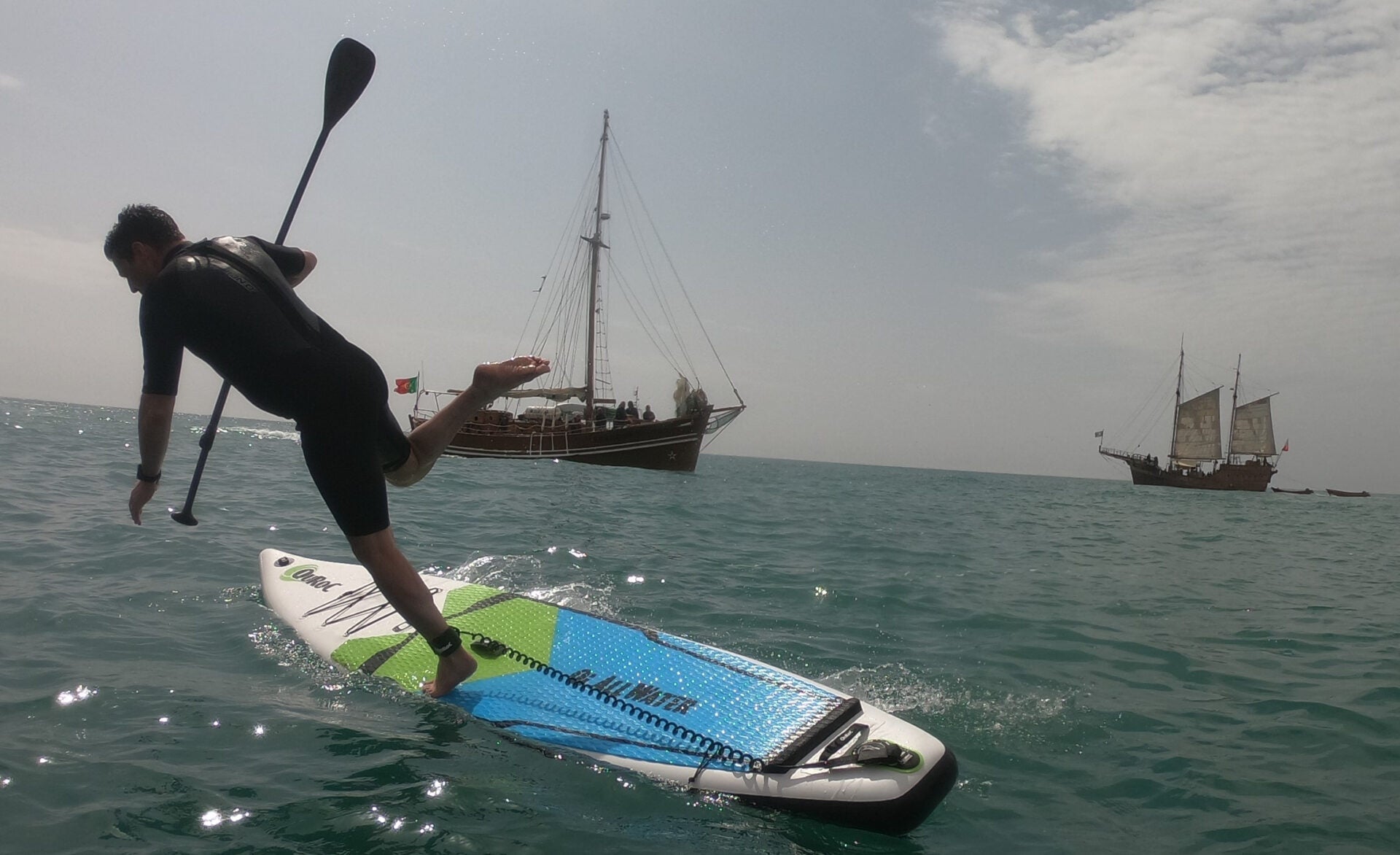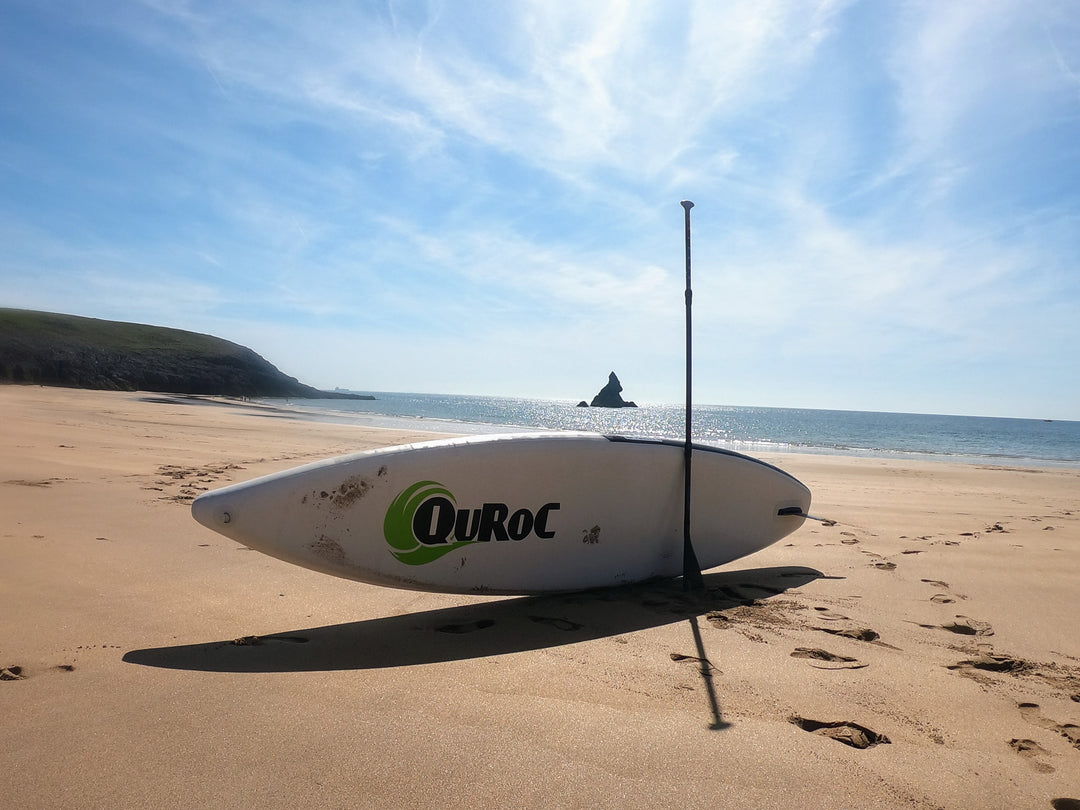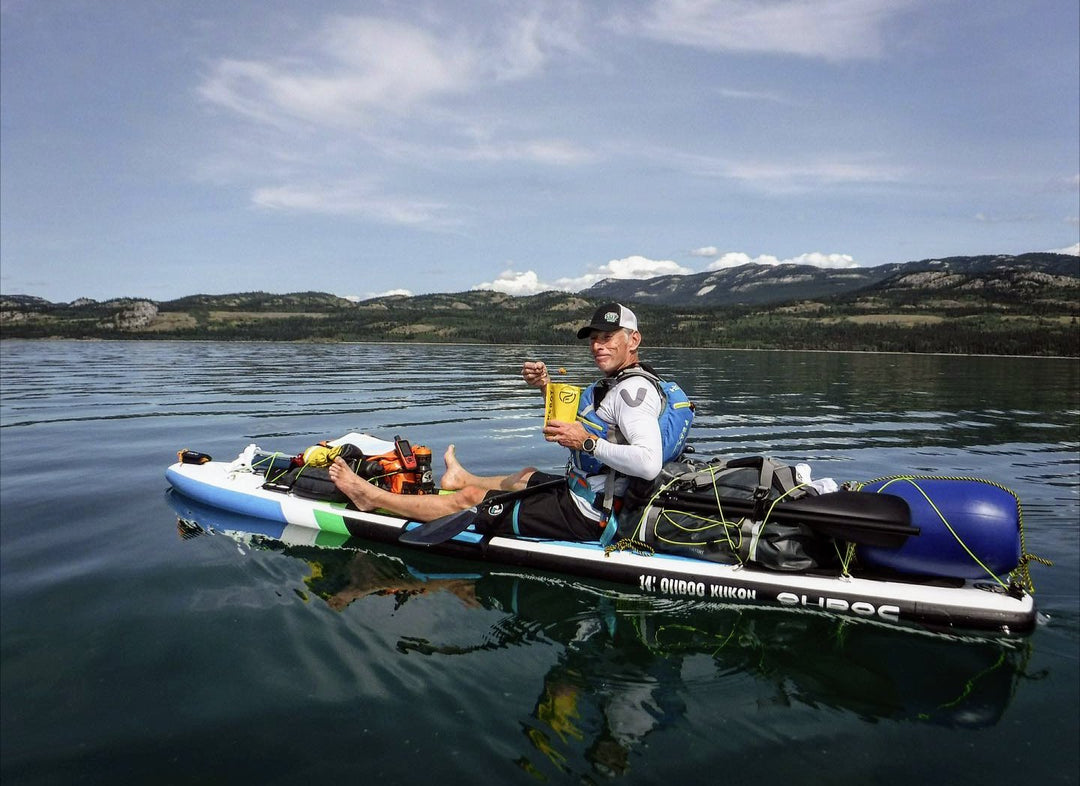Paddle boarding has grown in popularity in recent years, and for good reason. It's a terrific way to get some exercise, discover new places, and even improve your mental health. The best part is that you don't need to be an expert on paddle boarding to have a good time on the water.
If you’re new to this sport and want to develop your paddle boarding technique, it’s critical to know some of the most common mistakes that individuals make when they first start paddle boarding. So, the next time you're out practising your SUP technique, avoid the following newbie mistakes.
10 Common Paddle Board Mistakes
1. Holding the Paddle Backwards
We've all done it, and it's one of the most prevalent paddleboard errors. To begin, when you look at a paddle's profile, you will observe that the blade is inclined away from the shaft. This angle should point towards the front of your board and will assist you in effortlessly gliding across the water. Most paddles have a logo on the blade and this should face forward when paddling.
2. Falling Onto the Board
Another common mistake is falling onto the board rather than into the water. Many beginners try to catch their fall as if they were on land. When they fall, they'll try to catch themselves and fall on their knees or out on their hands, but you can hurt yourself doing this. Because the board is firm and the water is soft, if you fall, it’s best to avoid the board and fall into the water.
3. Wearing the Wrong Clothing
From t-shirts to wetsuits and even dry suits, the appropriate clothes can mean the difference between having a good day on your paddle board and having a bad time.
What you should wear is completely dependent on the weather, as well as how long you plan on being out on the water for. For more information, make sure to read our blog post ‘What to Wear Paddle Boarding’.
4. Not Wearing a Leash
Another of the most common and potentially fatal mistake made by newbies is not wearing a leash. Leashes are extremely crucial because they are your lifeline. If you fall off the board, it is what links you to the board, keeps the board near to you, and makes the board your floating device.
If you don't wear a leash, and fall off, the board can get away from you quickly, and if it's windy, you may not be able to catch up to the board. Always wear a leash and for more advice on which type of leash please check out our paddle board safety guide.
5. Not Inflating Your Board Enough
This is almost certainly everyone's least favourite aspect of paddle boarding. It is easy to adopt a 'that'll do' mentality when inflating your board when you want to get out on the water quickly, but ensure your paddle board is inflated to its recommended psi. Why? Well, if it isn’t inflated to the correct level, your board will bend and feel sluggish to paddle and balance. This can put strain on your body which will leave you fatigued before moving far.
6. Looking Down for Balance
When it comes to tips for SUP beginners, we would always advise you to look forward rather than down. So many people automatically look down, but this makes it very difficult to find your balance
The idea is to stand up, look straight forward at the horizon or something stable, and then start paddling and let your legs do the balancing. To maintain balance, keep your paddle in the water as this has a stabilising effect.
7. Getting Too Adventurous Too Soon
Is paddle boarding hard? Well, like anything, practise makes perfect. Begin with the basics. The temptation is to take your new paddle board out on the water on an epic expedition to the remote reaches of the UK, but it's crucial to start easy and master the fundamentals before pushing yourself.
Many novice paddlers believe they can take more than they can, and it is critical to understand your limits and skill level before venturing out, especially in less-than-ideal conditions.
8. Going Out in the Wrong Weather Conditions
Another mistake that beginners make is to just let the wind carry them. So, when you're first starting out, it's crucial to go out in nice, calm conditions. If it's windy, try to paddle upwind first. If you start drifting with the wind, turning around to attempt to paddle back upwind can be very tough.
9. Overcrowding the Board
Paddle boards are large pieces of equipment, but that doesn't mean you can fit your entire family on one.
Overcrowding the board is synonymous with exceeding the weight capacity. Having too many people or too much stuff on your paddle board might cause the board to ride low, making it harder to paddle.
You and one other adult, child, or dog should be able to fit comfortably on the board without compromising your important paddling area.
10. Paddling in Very Shallow Water
Paddling in water that is less than knee-deep is a common novice mistake. When you initially begin paddling, it is best to practise in shallow waters until you get the feel of it; however, paddling in waters less than waist deep can be dangerous for beginners. The most common injuries cause when paddling are to feet and ankles in shallow water. If you lose your balance, it's natural to step off the board but it's very easy to step on something sharp or turn your ankle in shallow water.
You can also damage your fin when paddling in water which is too shallow. Our fins are approximately 8-10 inches long and can easily be damaged if they come into contact with a rock or the ground. Furthermore, if they do catch on to something, your board will come to a halt and you may be thrown off the deck.
Enjoy Your First Paddle Boarding Experience with Quroc
The biggest mistake we see is beginners choosing the wrong paddle boards for them. Finding the best beginner paddle board is vital when you are starting out. Luckily, here at Quroc we’ve got a wide range of quality paddle boards suitable for beginners.
Need help finding the right one for you? Well, we could talk paddle boards all day long, so please, if you have a query, contact us.





